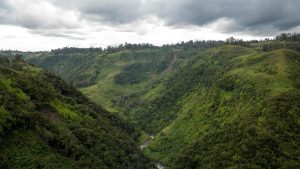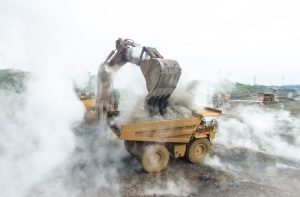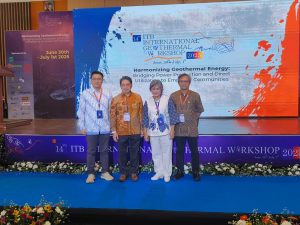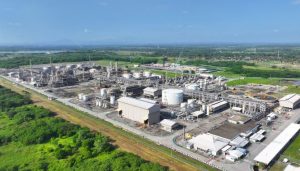
Semarang – Executive Director of the Institute for Essential Services Reform (IESR), Fabby Tumiwa, proposed that the government impose a 2.5% levy on Indonesia’s coal exports. The funds collected will be allocated to fund renewable energy development through a unique funding mechanism so that the energy sector can transform independently without relying on foreign grants.
“Our coal exports reach almost 500 million tons per year. By implementing a 2.5% levy regularly, we can collect large enough funds to be put into a special fund, for example, managed by the Environmental Fund Management Agency (BPDLH), which PLN and non-PLN industry players can later access as a form of equity,” Fabby said in a Media Lunch discussion at Rosti Café, Thursday, February 6.
Modelling India’s success
Fabby cited the renewable energy funding model that has been implemented in India. In that country, coal is produced domestically with a capacity of up to 1 billion tons per year, so funds for clean energy development have been allocated through the National Clean Energy and Environmental Fund (NCEEF).
“In India, no coal exports are the main focus, so they have managed to utilise domestic production to fund the energy transition. We should be able to learn from this experience. However, our production situation is different because Indonesian coal is mainly exported as a commodity contributing to state revenue,” Fabby explained.
According to Fabby, this levy mechanism is appropriate considering the large value of coal exports, which is a strategic source of income for the government. However, he also recognised the obstacles related to political will because some coal entrepreneurs involved in the legislature did not support additional levies.
“We need to design differential tariffs. For example, the tariff for export coal can be set in the range of 2.5-3%, while for domestic coal, which is not subject to export tax, the tariff should be higher. This ensures that revenue from coal taxes and royalties can be optimally allocated to support the energy transition,” said Fabby.
Independent funding for energy transition
Fabby emphasised that the levied funds do not have to go to the state budget but are managed through existing mechanisms.
“We already have institutional infrastructure, such as the Energy Transition Mechanism (ETM) Country Platform managed by PT Sarana Multi Infrastruktur (Persero). That way, coal export levy funds can be managed specifically to support the development of renewable energy projects, including supporting the de-dieselisation program for PLN on small islands,” Fabby said.
In his view, implementing this coal export levy will increase state revenue and disincentivise the coal industry from continuing to rely on fossil fuels. The funds collected are expected to accelerate investment in renewable energy projects, which have been lagging behind investment in the fossil energy sector.
“We must shift the flow of investment and funding from coal to renewable energy. With revenues that can reach tens of trillions of rupiah per year, the national energy transition target no longer has to rely on foreign funds,” Fabby concluded.
With this step, IESR is optimistic that Indonesia’s energy transition will be more quickly achieved and able to support sustainable economic growth and reduce the negative environmental impacts caused by the coal industry. (Hartatik)














